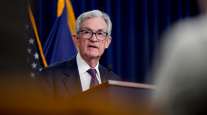Associated Press
Key Inflation Measure Surges Most Since June

[Stay on top of transportation news: Get TTNews in your inbox.]
WASHINGTON — The Federal Reserve’s preferred inflation gauge rose in January at its fastest pace since June, an alarming sign that price pressures remain entrenched in the U.S. economy and could lead the Fed to keep raising interest rates well into this year.
The Feb. 24 report from the Commerce Department showed that consumer prices rose 0.6% from December to January, up sharply from a 0.2% increase from November to December. On a year-over-year basis, prices rose 5.4%, up from a 5.3% annual increase in December.
Excluding volatile food and energy prices, so-called core inflation rose 0.6% from December, up from a 0.4% rise the previous month. And compared with a year earlier, core inflation was up 4.7% in January, versus a 4.6% year-over-year uptick in December.
The report also showed that consumer spending rose 1.8% last month from December after falling the previous month.
January’s price data exceeded forecasters’ expectations, confounding hopes that inflation was steadily decelerating and that the Fed could relent on its campaign of rate hikes. It follows other recent data that also suggested that the economy remains gripped by inflation despite the Fed’s strenuous efforts to tame it.
Earlier in February, the government issued a separate inflation measure — the consumer price index — which showed that prices surged 0.5% from December to January, much more than the previous month’s 0.1% rise. Measured year over year, consumer prices climbed 6.4% in January. That was well below a recent peak of 9.1% in June but still far above the Fed’s 2% inflation target.
Since March of last year, the Fed has attacked inflation by raising its key interest rate eight times. Yet despite the resulting higher borrowing costs for individuals and businesses, the job market remains surprisingly robust. That is actually a worrisome sign for the Fed because strong demand for workers tends to fuel wage growth and overall inflation. Employers added a sizzling 517,000 jobs in January, and the unemployment rate fell to 3.4%, its lowest point since 1969.

Host Mike Freeze speaks with Online Transport's Randy Obermeyer about diagnostics. Hear the program above and at RoadSigns.TTNews.com.
“Reaccelerating price pressures, coupled with a still-strong labor market that is restoring incomes and is supporting demand, will keep the Fed on track to hike rates further over coming meetings,” said Rubeela Farooqi, chief U.S. economist at High Frequency Economics.
The Fed is thought to monitor the inflation gauge that was issued Feb. 24 — the personal consumption expenditures price index — even more closely than it does the government’s better-known CPI.
Typically, the PCE index shows a lower inflation level than CPI. In part, that’s because rents, which have soared, carry twice the weight in the CPI that they do in the PCE.
The PCE price index also seeks to account for changes in how people shop when inflation jumps. As a result, it can capture emerging trends — when, for example, consumers shift away from pricey national brands in favor of less expensive store brands.
The consumer price index showed a worrisome rise from December to January: It jumped 0.5% — five times the November-to-December increase.
Likewise, the government’s measure of wholesale inflation, which shows price increases before they hit consumers, accelerated 0.7% from December to January after having dropped 0.2% from November to December.
Want more news? Listen to today's daily briefing below or go here for more info:




